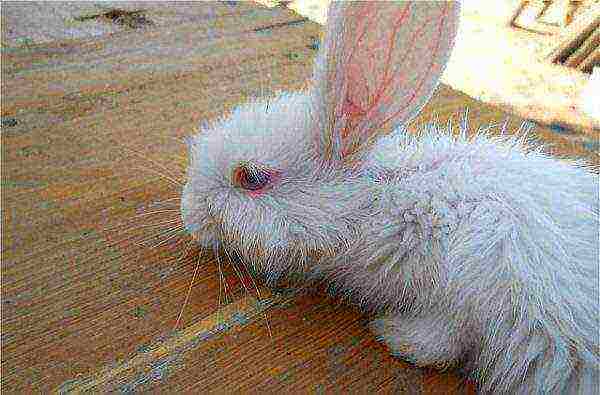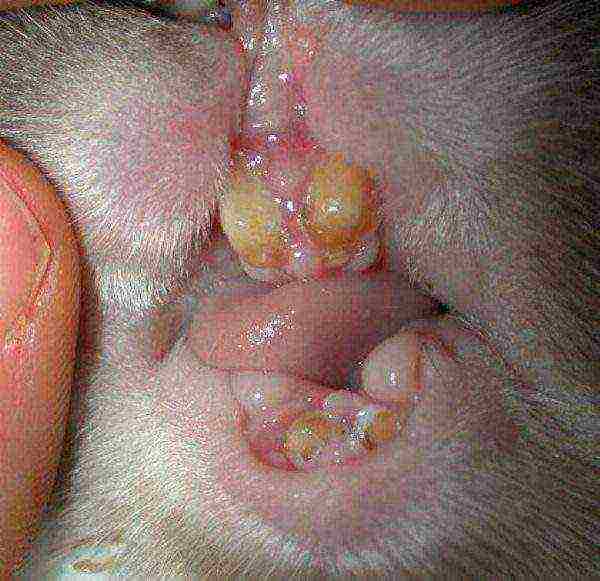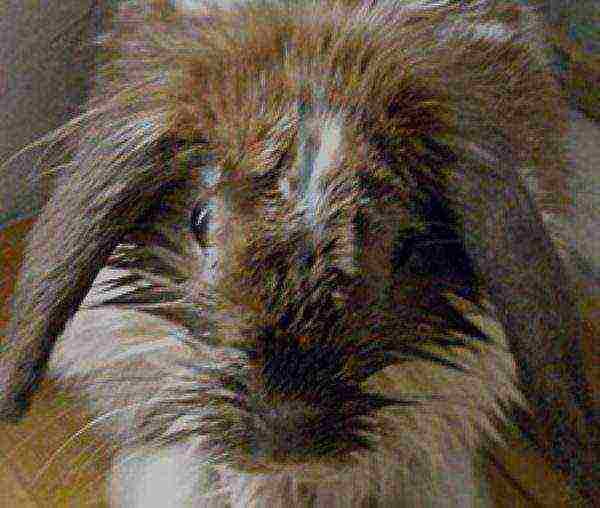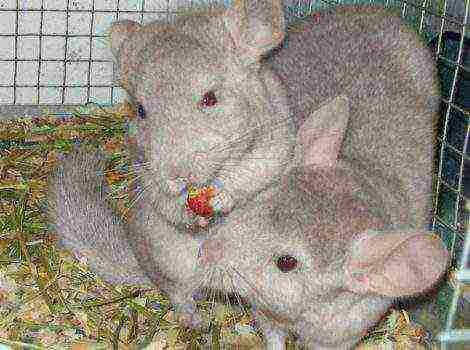Content
Methods for the treatment of stomatitis in rabbits
"Wet face" or infectious stomatitis - this disease usually affects rabbits up to 3 months old and then passes on to healthy animals. The case is possible. The spread of the disease in rabbits is associated with poor sanitation, pollution in mother liquors, streams and feeders. In order to avoid troubles, it is necessary to know the reasons, determine the signs, be able to provide timely assistance and carry out preventive treatment.
Causes of stomatitis in rabbits
Stomatitis, popularly wood lice, rabbits get sick from a month to six months. The cause of the disease is a filter virus... It is found dormant in urine, saliva and blood. The disease manifests itself most of all in the autumn and spring. Why?
- in this period the number of young animals is increasing;
- weakened immunity;
- crowded accommodation;
- temperature drops air;
- the rise air humidity due to prolonged rainfall;
- mating infected animals, as a result of which sick rabbits are born.

The source of infection is infected animals that spread the disease to healthy ones. Stomatitis symptoms appear in 2-3 days.
Why does a rabbit have a wet face, symptoms of woodlice
A wet face is not the first sign of the disease, but rather the final one. The disease begins with the fact that a white coating appears on the tongue of a sick animal... Its shade varies from whitish to gray-reddish. Sores appear, and salivation increases. After a few days, the nasolabial part turns red. The hair around the mouth and on the neck becomes wet and sticky. The animal stops moving and for the most part sits in the corner of the cage.

They scratch their muzzle with their paws, because the sores on the tongue itch. Because of the painful sensations, it hurts them to chew food, and as a result, the sick animal loses weight. Diarrhea may develop due to improper nutrition.
After the disease is detected, action must be taken. First, put your rabbit in an empty cage. Secondly, to prescribe treatment for all animals that were with the patient together.
Treatment is prescribed depending on the form of the disease. Stomatitis is divided into two forms:
- Mild infectious.
With this form, the rabbit will recover on its own. The disease is mild... Most often, it is almost not even noticeable. The sores are also present, but not as deep. Itching and hurting less. Less salivation. After about two days, the rabbits recover. They are mobile, good appetite. No weight is lost. Only the nose becomes warm and soft. Treat your mouth to help you heal faster.
- Severe form.
In this case, death is observed after a week... But, if treatment is carried out in a timely manner, then there is a chance to save the rabbit. After the salivation has increased, the general condition of the sick rabbit also changes. They don't move much. They sit in the corner of the cage and constantly move their lips, as if they are chewing food. Eating food becomes painful due to ulcers, so the animals lose weight. The edges of the lips are stained with frothy saliva... Wet under the lower lip and around the neck. The sores itch and the rabbit regularly rubs its muzzle with its paws. At the same time, it takes on an unattractive wet appearance. Therefore, the disease is called biting or wet muzzle. It is accompanied by uncontrolled diarrhea.

With timely treatment, the animal recovers in 1.5 weeks.... Wool remains glued for a long time or falls out. After the sores, traces remain that heal for a long time.
How to treat this infectious disease
- Irrigate the mouth an aqueous solution of manganese (make a 0.15 percent solution).
- To bury in the mouth penicillin solution (0.05-0.1 grams once a day). Or give intramuscular injections.
- Put a crushed tablet (0.2 grams) into your mouth streptocide... We repeat the procedure for 2-3 days.
- Copper sulfate dissolve in water (2%) and swab the nasolabial part with a swab. This procedure is done twice a day for three days.
- Make ointment with the following composition:
- lanolin 30 grams;
- penicillin 200 thousand units;
- sulfamide 2 grams;
- white neutral petrolatum 170 grams.
Mix everything in a water bath until smooth. Lubricate the oral cavity with ointment.
Unconventional methods of treating the disease
Some rabbit breeders used to treat stomatitis apidermine... It is formulated to treat burns, abscesses and ulcers, but is great for treating stomatitis in rabbits. This medicine contains:
- pollen;
- propolis;
- honey.
Used like:
- Anti-inflammatory and accelerates cell regeneration.
- Pain reliever.
- Boosts immunity.
Preventive work against stomatitis
To avoid mass deaths from infectious diseases and prevent the occurrence of diseases, the conditions for keeping rabbits must be observed. What preventive measures are required?
- Purity in cells and mother liquors:
- the accumulation of feces and urine should not be allowed.
- Mandatory cleaning of feeders and drinkers:
- they must be clean and disinfected.

- Disinfection of inventory and tools in the rabbit.
- Before entering the rabbit make a disinfectant barrier:
- Make a small square indentation and pour lime into it, which will serve as a good shoe disinfectant.
- Animals should not be kept crowded... There should be animals in the cages according to the rate of keeping.
- Feed the rabbits only high quality, nutritious.
- For prophylaxis in drinking water add a few drops of iodine.
- Isolation of sick animals from a healthy livestock.
- Disinfection of cells in which the sick animals were sitting.
- Do not place the rabbit near sources of noise... When noisy, animals behave restlessly. Rabbits can abort. In rabbits, immunity decreases.
To save money, it is more profitable to prevent diseases than to treat them later and spend a lot of time and money on it. Infectious diseases most often appear in autumn, spring... Therefore, at this time, the breeder needs to be especially careful in order to take timely measures to identify sick animals.


